Deadlock vs Dota 2 Mechanics: In-Depth Gameplay Comparison
Updated On: October 25, 2025 by Aaron Connolly
Core Gameplay Differences
Deadlock ditches Dota 2‘s usual MOBA setup and throws in third-person shooting, vertical movement, and 6v6 squads. Both games bring plenty of strategic depth, but the way they do it feels totally different.
Fundamental MOBA Structure
Dota 2 sticks to the classic MOBA layout: three lanes, top-down view. We pick heroes and use point-and-click controls, always trying to last-hit creeps for gold.
The jungle has neutral creeps, so we can farm between lane pushes. Ancient camps and Roshan force teams to think about big objectives.
Deadlock changes the formula—now you get six lanes, not three. That means more action all over the map.
Movement isn’t just left and right anymore. Ziplines and vertical spaces let you zip around, which is honestly pretty wild compared to old-school MOBAs.
Instead of casting spells on jungle creeps, we just shoot them. Getting the last hit is still important, but you need good aim, not just good timing.
Team Dynamics and Roles
Dota 2 uses five roles: carry, mid, offlane, support, and hard support. Each player has a job, and you usually stick to it.
Deadlock’s 6v6 setup shakes up team roles. You get more flexibility, and the old rigid roles don’t really apply.
Since everyone’s shooting, you can’t just rely on game sense or positioning—mechanical aim actually matters. Supports have to pull their weight in fights, not just hide behind the team.
With six people per team, communication gets tricky. You need sharper callouts, especially with all the vertical movement.
Deadlock really lets you switch up your role mid-game. If your team needs something different, you just change your playstyle or items.
Primary Objectives Comparison
In Dota 2, you’re always working toward destroying the Ancient. You take down towers, then barracks, and finally the big objective.
Deadlock swaps the Ancient for a Patron—a giant golem that acts as the final boss. Beating it takes a coordinated team effort, not just hitting a building.
Escort missions come into play too. You guide NPCs down the lanes to smash through defenses, which mixes MOBA strategy with something a bit more like an action game.
Timing is more unpredictable in Deadlock. Instead of waiting for abilities to come off cooldown, sometimes you just have to duel it out.
Both games have plenty of objectives, but Deadlock’s verticality means you can flank and surprise people in ways you just can’t in Dota 2.
Last-Hitting and Lane Control
Both games reward you for getting the last hit on minions, but they handle it in their own way. Deadlock turns farming into a kind of shooting contest, while Dota 2 is all about denying the enemy farm with creep control.
Dota 2: Last-Hitting and Denying
In Dota 2, you need to time your attacks just right to finish off enemy creeps. You watch the health bar and try to nail the last hit.
The denying mechanic lets you attack your own creeps when they’re low, so the enemy gets nothing.
Key mechanics:
- Each hero’s attack animation feels different
- You can pull creeps to mess with their pathing
- Denying your own creeps hurts the enemy’s gold
- You keep the lane balanced by managing the wave
Good players manage to last-hit and deny at the same time. It’s a constant back-and-forth for every single creep.
This system really rewards players who know the game inside out. If you understand how much damage you do and how creeps behave, you’ll win more lanes.
Deadlock: Soul Orbs and Economic Duels
Deadlock updates last-hitting and makes it all about shooting. Every minion drops a soul orb, and both teams can grab it.
Denying works differently. Instead of attacking your own minions, you shoot the soul orbs before the enemy can pick them up.
Main differences:
- Hitscan weapons mean accuracy matters more than timing
- Everyone’s got a gun, so there’s always pressure in lane
- Soul orbs only stick around for a few seconds
- You can use mobility to get aggressive and steal farm
This leads to real duels over resources. If you’ve got better aim, you’ll end up with more gold.
Playing aggressively pays off. Instead of hanging back, you want to push up and grab as many souls as you can.
Lane Progression and Combat
Both games care about where the creep wave is, but Deadlock’s shooter mechanics change the rules. In Dota 2, you usually want to farm close to your tower.
Dota 2 lane control:
- Keep the wave near your tower for safety
- Use high ground to defend easier
- Harass with limited range
- Block creeps to mess with enemy movement
Deadlock does things differently. There’s more cover in the lanes, so you can play up front and still be safe. Pushing the wave can actually help you get better shooting angles.
Deadlock’s twists:
- Cover is super important for farming
- Everyone can harass from range, all the time
- Stairs near guardians help defenders hold their ground
- Soul orbs give instant rewards for risky plays
Mobility lets you move between cover quickly. Farming turns into a fast-paced dance, as you keep shifting around to find the best spot.
Itemisation and Build Strategy
Both games have item shops, but Deadlock keeps things simple with just a handful of categories, while Dota 2 lets you build thousands of combinations. Deadlock’s upgrades mostly boost mobility and shooting, but Dota 2 is all about counter-building and timing your purchases with itemisation.
Shop Differences
Deadlock’s shop breaks items into four types: Weapon, Vitality, Spirit, and Flex. You can buy from your base or from lane shops that pop up around the map.
Souls are the main currency. You earn them by getting kills, farming, or scoring objectives.
Dota 2’s shop is way more complicated—over 200 items in categories like consumables, attributes, and secret shop stuff. You sometimes have to actually walk to a hidden shop to get the best gear.
Gold management becomes a mini-game. You want to farm, get kills, and take objectives, but you also risk losing gold if you die.
Big difference: Deadlock gives you quick access to most items, but Dota 2 makes you plan ahead and sometimes travel for the good stuff.
Build Customisation
Deadlock builds usually focus on buffing your weapon, health, abilities, or movement. Flex items let you adjust on the fly.
Mobility items are super popular. Stuff like Majestic Leap or Superior Stamina make it easier to get around or escape.
Dota 2’s item builds require you to really know your hero and the enemy team. You choose between core items that define your role and situational items that counter what the enemy’s doing.
You often need to combine smaller items into something big. That means you have to manage your gold and timing carefully.
Build guides help new players in both games. Deadlock’s are pretty straightforward, but in Dota 2, players often check out community guides like Torte de Lini’s to figure out what to buy.
Buffs, Power-Ups, and Progression
Deadlock progression is all about collecting souls and timing your upgrades. You hit power spikes when you finish important items, especially those that boost your weapon or movement.
Controlling the map helps you get more souls and deny the enemy. You can even deny your own creeps to limit how much the other team earns.
Dota 2’s progression follows the classic MOBA flow—early, mid, and late-game items. Carries build for damage, supports for utility and vision.
Neutral items show up at certain times and give random buffs. These can seriously change how teams play.
Timing is everything. Deadlock rewards you for steady farming and smart buys, while Dota 2 makes you hit your item timings if you want to win fights.
Hero Abilities and Playstyles
Both games have deep ability systems. Deadlock keeps upgrades simple, but Dota 2 lets you fine-tune almost everything. The roles overlap, but Deadlock’s shooter focus leads to some pretty unique playstyles.
Ability Progression
Dota 2 uses skill points. You level up abilities from 1-4 and pick talents at certain levels, up to 25.
Each hero gets four abilities and a talent tree. You have to decide which to max out first and when to unlock your ultimate.
Deadlock skips the skill points. You start with all four abilities, and you upgrade them with souls.
You can boost each ability three times. That gives you more flexibility, since you can adapt your build as the match changes.
Quick tip: In Deadlock, upgrade what fits your style. Damage players should go for offense, while supports might want more utility.
Dota 2 rewards planning ahead and knowing the game. Deadlock pushes you to make fast, tactical choices.
Hero Roles Across Both Games
MOBA roles show up in both games, but Deadlock handles them differently. You still see carries, supports, and initiators, but the shooter mechanics shake things up.
Dota 2 sticks to five positions: hard carry, mid, offlane, soft support, and hard support. Each has its own farm and job.
Deadlock borrows from hero shooters like Overwatch. You’ll find damage dealers, tanks, and supports, but some heroes can play multiple roles.
Hero Role Comparison:
| Dota 2 Role | Deadlock Equivalent | Key Difference |
|---|---|---|
| Hard Carry | Damage Dealer | Less farm dependency |
| Support | Support | More active combat role |
| Initiator | Tank/Initiator | Requires aim skills |
Because everyone’s fighting, every hero needs to know how to shoot. Supports can’t just sit back—they have to get in the mix.
Heads up: If you’re used to passive support play, Deadlock will surprise you. Even healers need good aim to help the team.
Movement Mechanics and Mobility

Movement shapes how you play and strategize in these games. Dota 2 sticks with point-and-click controls, while Deadlock lets you move in 3D, with dashes, wall jumps, and more.
Traditional MOBA Movement in Dota 2
In Dota 2, you move your hero with that classic top-down click-to-move setup. The whole thing really puts positioning above raw mechanical skill.
Basic Movement Controls:
- Right-click to move
- Hold position commands
- Attack-move functions
- Turn rates shape how snappy your hero feels
Turn rates and movement speeds keep things in check. Most heroes scoot around at about 280-320 units per second, give or take.
Positioning over Mechanics
If you want to move well in Dota 2, you need game sense. Knowing where to ward, how to sneak through the jungle, and where to stand in a fight matters more than twitch reflexes.
Mobility Items and Abilities
Items like Blink Dagger or Force Staff give heroes a way to jump around the map. These let you reposition instantly, but only every so often. Some heroes—like Anti-Mage and Queen of Pain—come with their own mobility spells.
Advanced Mobility in Deadlock
Deadlock shakes up MOBA movement with full 3D controls and stamina-based moves. Here, you can dash, double jump, slide, and wall jump all over vertical maps.
Core Movement Techniques:
- Dash (1 stamina) – move horizontally in any direction
- Double jump (1 stamina) – get extra height
- Air dash (1 stamina) – shift mid-air
- Wall jump (0 stamina) – bounce off walls for more height
- Slide (0 stamina) – keep your speed on slopes
Stamina Management
Most heroes start with 3 stamina bars that slowly refill. You’ve got to manage your stamina, or you’ll run out and get caught off guard.
Advanced Combos
Skilled players chain moves together—dash then jump, for example—to cover a ton of ground. Sliding keeps your momentum up without burning stamina. These combos really separate the pros from the newbies.
Ziplines connect the lanes, so you can rotate fast. Instead of teleport scrolls like in Dota 2, you’ve got constant options for getting around.
Combat and Escape Techniques
Dota 2 and Deadlock take combat mobility in different directions.
Dota 2 Combat Movement
You set up your positioning before fights. Once things kick off, movement gets pretty limited. Escape items like Town Portal Scrolls need time to channel. Most escapes come down to hero abilities or help from teammates.
Juking through trees and using fog of war lets you outplay people. You rely on vision tricks and terrain knowledge, not so much on raw movement skill.
Deadlock Combat Mobility
Combat feels way more dynamic. You can dash behind cover mid-fight or slide under dangerous abilities. The infinite ammo slide mechanic means you can keep firing while moving.
Quick Win: Try dash-slide combos in Deadlock’s sandbox mode. You’ll keep your speed up during retreats and stay ready to fight.
Vertical positioning really matters. Dash up to rooftops, wall jump away from danger, or drop down for a sneaky engage. This kind of layered combat just doesn’t happen in old-school MOBAs.
Fast-fall tricks let heroes like Vindicta and Grey Talon drop from above in a flash. The whole movement system encourages bold plays you just can’t pull off in Dota 2.
Map Design and Objectives
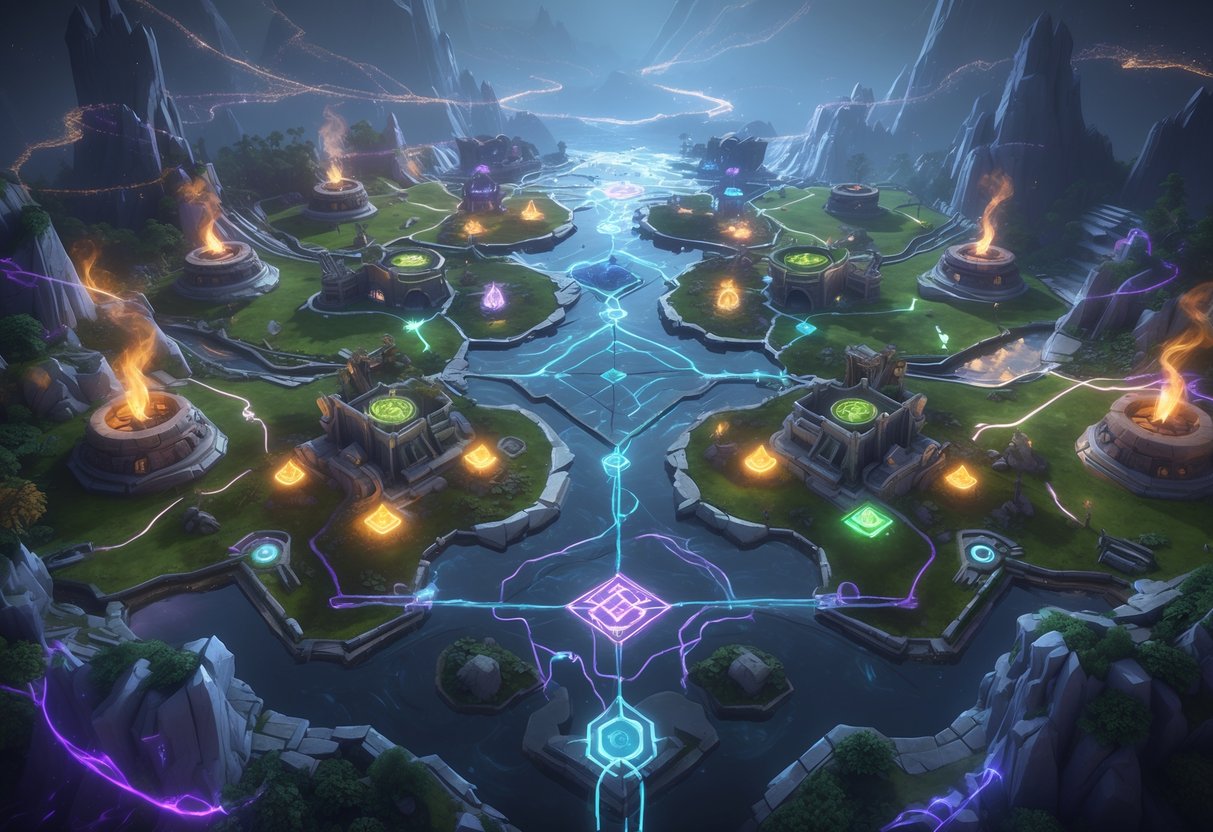
Deadlock’s map runs on three lanes with lots of vertical movement and close fights. Dota 2, on the other hand, spreads action out over wider ground and puts more weight on strategic positioning. Both games make objectives a team thing, but Deadlock’s soul-based economy and fast rotations give it a totally different tempo compared to Dota 2’s more methodical style.
Map Layout Differences
Deadlock sticks to three lanes but really leans into vertical movement. You’ll use ziplines, rooftops, and multi-level paths to get around in a flash.
The map feels tight. Teams rotate between lanes in seconds with the zipline network, so pressure never really lets up.
Dota 2 keeps things classic—three lanes, big jungle areas, and a river splitting Radiant from Dire. Moving between lanes takes more planning and time.
Key differences:
- Deadlock: Vertical play with ziplines and rooftops
- Dota 2: Horizontal movement and set jungle paths
- Deadlock: Faster lane rotations
- Dota 2: Positioning and vision control matter more
Deadlock’s design pushes for early aggressive rotations. Teams often group up and pressure lanes quickly. In Dota 2, patience and calculated moves win out.
Jungle and Neutral Monsters
Deadlock’s jungle has neutral camps that drop souls for upgrades. These respawn often and let you farm without wandering far.
The jungle sits close to the lanes, so you can clear camps between waves and get back to the action fast.
Dota 2’s jungle is trickier. Different camps give different rewards, and ancient camps need special timing or abilities to clear.
| Feature | Deadlock | Dota 2 |
|---|---|---|
| Camp Types | Standard soul-giving neutrals | Multiple tiers, different rewards |
| Stacking | Limited | Complex, timing-based stacking |
| Access | Near lanes | Needs more dedicated jungle time |
Deadlock’s jungle fits its fast pace. You can farm and jump right back to lane. In Dota 2, you need to control the jungle and time things carefully.
Objective Control and Impact
In Deadlock, you win by destroying the enemy Patron, but you’ve got to take out Guardians, Walkers, and other structures first.
Soul Urns spawn on a timer and give power spikes. Teams fight over these urns all the time, and grabbing one can swing the match.
Dota 2 centers on Roshan and towers. Roshan drops the Aegis, which gives a huge advantage.
Strategy shifts with objectives:
- Deadlock: Frequent skirmishes over Soul Urns
- Dota 2: Big team fights for Roshan
- Deadlock: Push through defenses step by step
- Dota 2: Win by split-pushing or fighting
Both games reward teams that control objectives, but Deadlock’s happen more often, so matches stay lively.
Minions, Creeps, and Souls
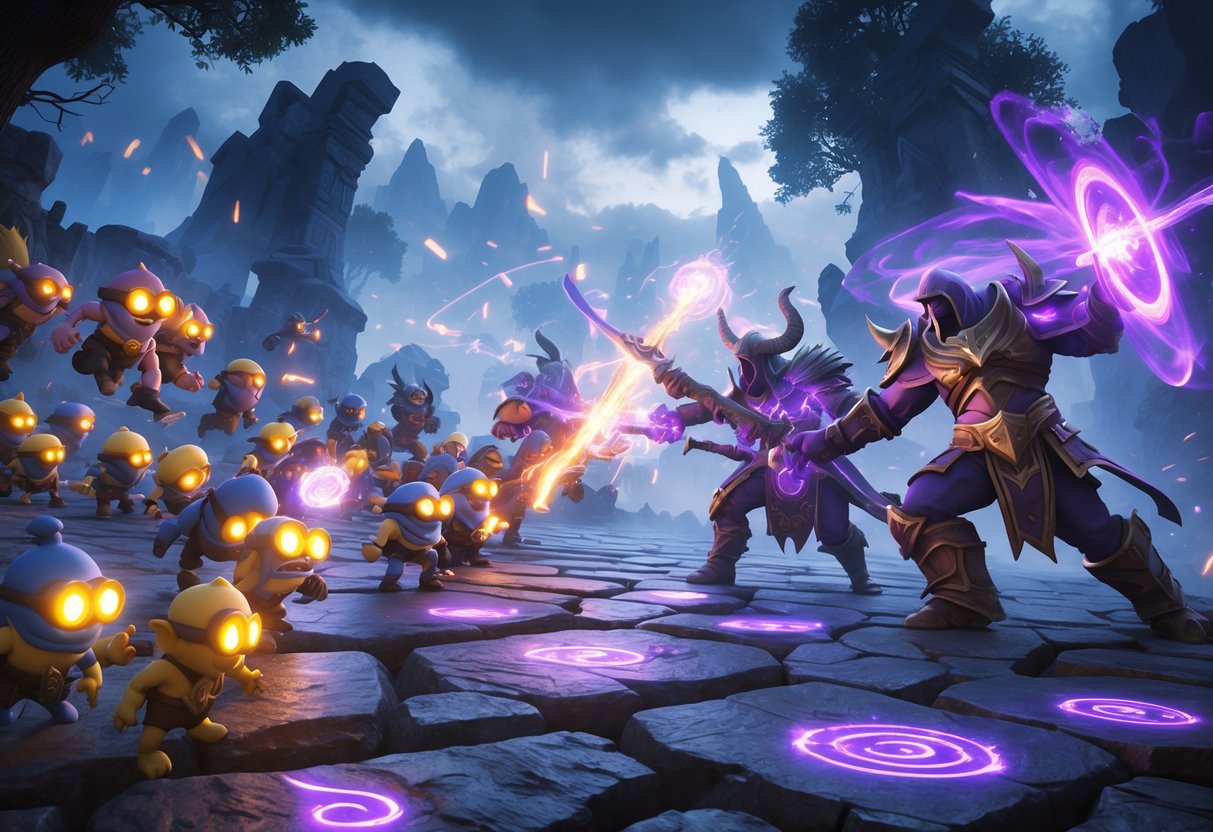
Both Deadlock and Dota 2 use lane creatures for gold and progression. Deadlock shakes up the usual last-hitting with a soul mechanic that makes farming more hands-on.
Role of Creeps and Minions
Creeps spawn in waves down every lane in Dota 2. You need to time your hits to get the gold. It’s all about precision and being in the right spot.
Enemies can deny you gold by killing their own creeps first. If you’re out of position, you’ll miss out. New players usually struggle with last-hitting and denying at first.
Deadlock brings its own take with creeps that march toward enemy bases. The farming system feels different.
Main differences:
- You shoot instead of clicking to attack
- Soul orbs pop out after kills
- Teammates nearby share income
- Melee hits always give full rewards
Early game in both is about farming creeps. You’ll spend the first 15 minutes building up gold (or souls) with steady last-hits.
Soul Collection and Rewards
Deadlock splits farming into two parts. Kill the creep for half its value, then grab the floating soul orb for the rest.
The soul system brings competition:
- Opponents can snatch your soul orb
- Quick reactions decide who gets paid
- Every last-hit turns into a mini-duel
- Supports can join the farming too
Laning feels like an active shooter instead of a click-fest. Players fight for every soul orb from the start.
Dota 2 gives you a flat gold amount per kill. In Deadlock, your haul depends on how well you collect souls. Miss a soul orb, and you lose out.
Supports get a real boost in Deadlock. They can help pick up souls without stealing farm. This shared system encourages teamwork in lane.
Economic Mechanics
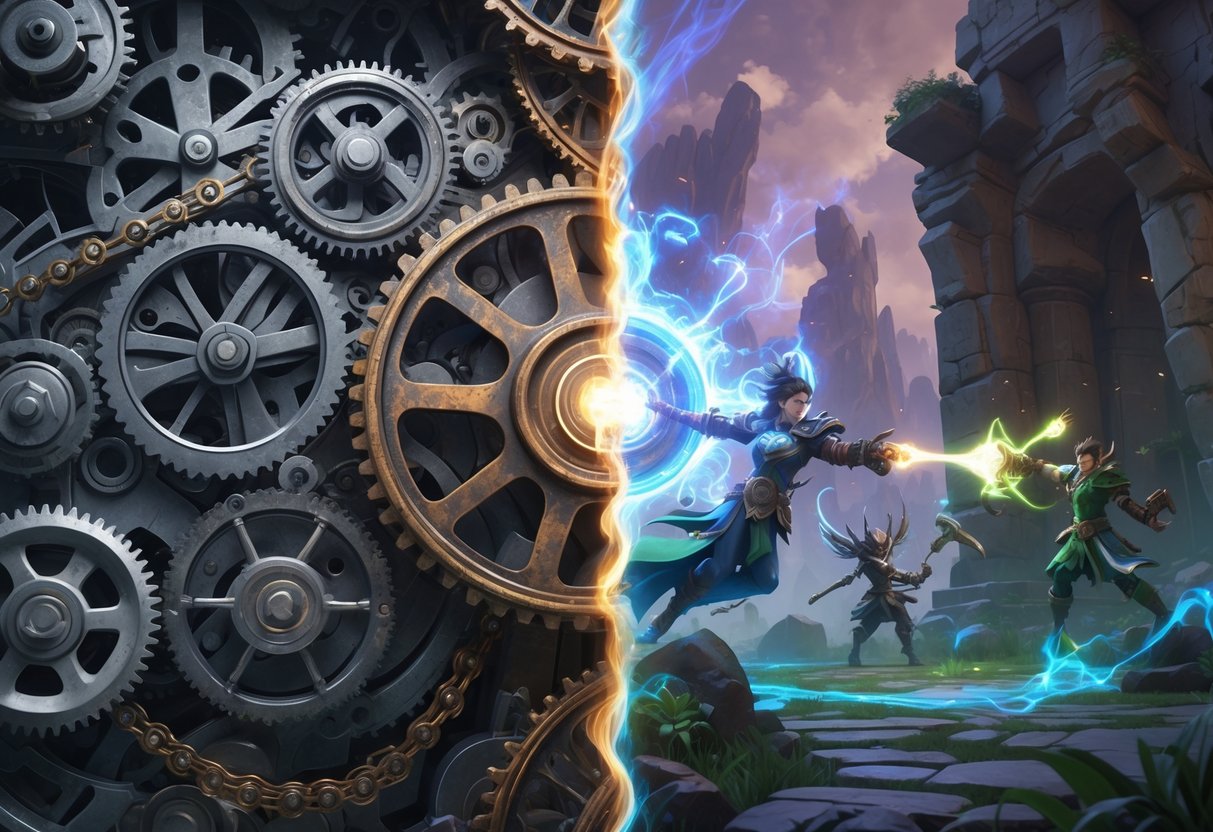
Deadlock and Dota 2 handle money and resources in their own ways. Deadlock’s soul-sharing makes farming easier for everyone. Dota 2’s strict gold system sets up clear pecking orders.
Gold and Income Generation
Dota 2 keeps gold priority strict. Carries get most of the farm, while supports scrape by.
Last-hitting gives you all the gold, but miss and you get nothing. Supports usually pass up farm for the carry’s sake.
Items can be cheap or super expensive. Wards cost 50-75 gold, but carry items might run you 3,000-6,000 gold.
Deadlock drops gold for souls. The system’s way more forgiving.
Souls get duplicated for both lane partners early on. You and your teammate both get paid from the same creep.
As the game goes on, souls start getting shared across the whole team. Everyone keeps up, no matter their role.
Items fall into weapon, vitality, and spirit categories, and you can’t just stack one type. You’ve got to spread out your spending.
Resource Sharing and Denial
Dota 2 lets you deny your own creeps, cutting off gold and XP from the enemy.
If you deny well, enemies get nothing for gold and just a bit of XP if they’re close.
Supports often focus on denying instead of farming, which makes the economy a tug-of-war.
Deadlock keeps last-hitting but softens the blow. Miss a last-hit, and you can still grab the soul orb.
Any teammate can pick up the orb for a short time. Denial’s still possible, but it doesn’t feel as punishing.
Both players in lane can thrive at once. There’s less fighting over farm between teammates.
Influence of Third-Person Shooters

Deadlock goes in a new direction by mixing third-person shooter controls with classic MOBA elements. This blend makes the action feel more personal and borrows a lot from hero shooters, but still keeps plenty of strategy.
Hero Shooter Elements
Deadlock clearly borrows from games like Overwatch with its character design and abilities. Each of the 21 heroes fills a distinct role—damage, support, tank—just like in hero shooters.
You get damage dealers, support types, and tanky heroes, but Deadlock layers on MOBA-style builds and farming.
Movement abilities matter a lot. Heroes zip around on ziplines and use vertical tricks you just won’t see in Dota 2.
The third-person camera makes dodging and positioning feel direct. You’re right there with your hero, not just clicking from above.
Team fights shift from chess-like positioning to fast-paced shooter brawls. Quick reflexes suddenly matter as much as game sense.
Gunplay and Ability Synergy
Deadlock asks you to aim your shots and abilities. That adds a skill ceiling you won’t find in top-down MOBAs.
Heroes blend gunplay with magic. Some pick off targets from range, others dive in close with supportive spells.
The cooldown system looks familiar, but items can tweak those timers. That opens up new build paths for both shooting and spellcasting.
Ultimates usually need precise aim, not just a click. High-impact plays take real skill to pull off.
Weapon upgrades and magic boosts come from the same item system. You can power up your gun and your abilities at the same time, which is a pretty cool twist.
Learning Curve and Accessibility
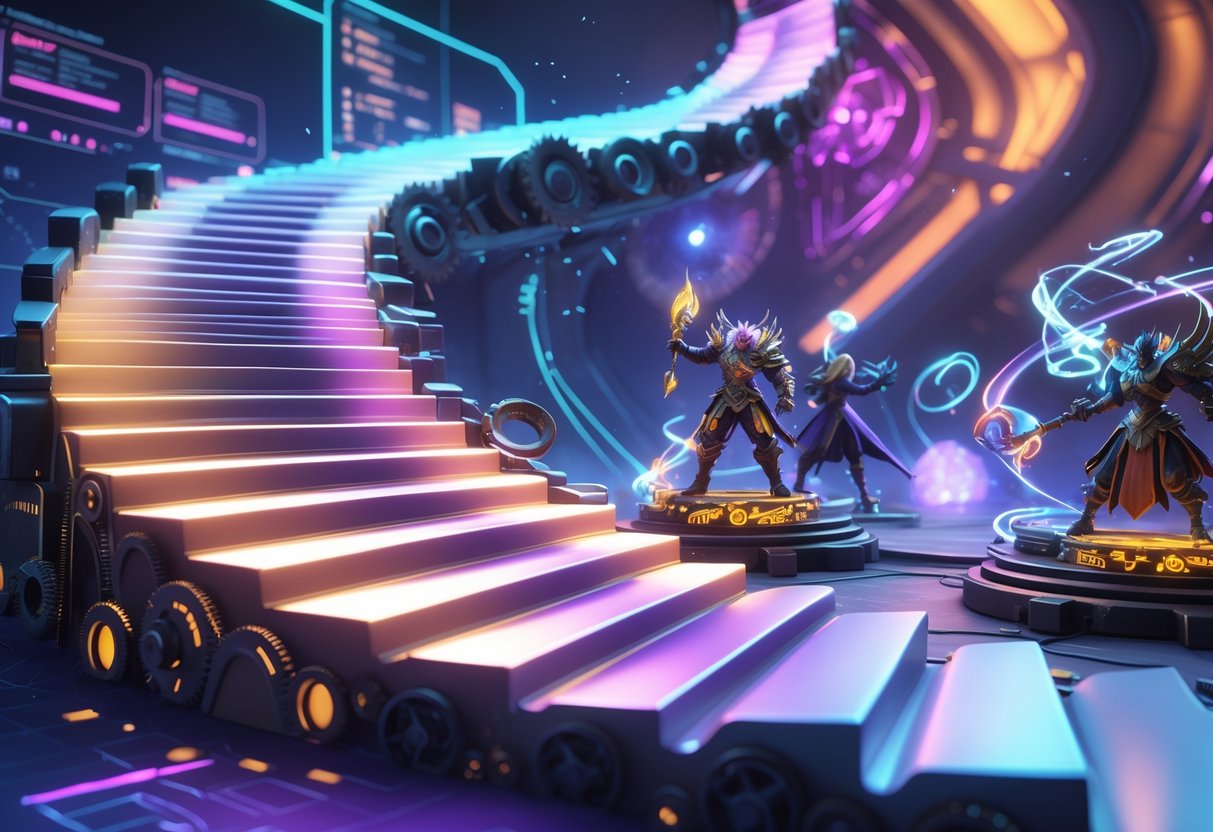
Deadlock and Dota 2 both throw plenty of challenges at new players, but they take pretty different approaches to onboarding. Deadlock runs an invite-only playtest, which feels a bit exclusive, while Dota 2 leans on its well-established systems to support beginners.
New Player Experience
Dota 2 has a notorious learning curve—probably one of the steepest in competitive gaming. Newcomers face a flood of complexity right away, with more than 120 heroes and a dizzying number of item combos to figure out.
The game doesn’t really hold your hand. Compared to League of Legends, which introduces new players with easier champions and restricted modes, Dota 2 just expects you to swim in the deep end from the start.
Honestly, a lot of new Dota 2 players report feeling completely lost for their first 50 hours or more.
Deadlock brings a different kind of challenge. The game fuses MOBA strategy with hero shooter mechanics, and players often describe the learning curve as steep—sometimes even overwhelming.
Just moving around in Deadlock sets apart casuals from competitive players. Techniques like dash-jumping, corner boosting, and air strafing demand a lot of practice.
Players who come from hero shooters like Overwatch usually adapt faster to Deadlock’s third-person view and ability-based fights. On the other hand, those with a MOBA background already understand farming, itemization, and controlling objectives.
Onboarding and Playtest Insights
Dota 2 offers a beginner mode to help ease new players into the basics. The community’s built a mountain of guides and resources over the years.
Still, learning the ropes can feel rough. Many players complain about toxic teammates and smurfs, which makes the early experience even tougher.
Deadlock’s playtest gives the community a different vibe. With only 15,000-20,000 regular players, things feel smaller and a bit more focused.
The invite-only system means players have to actively choose to dive in, so you end up with a pretty dedicated (and maybe intimidating) playerbase.
If you’re just starting out, try bot matches first in either game before facing real opponents.
People playing Deadlock right now say its complexity rivals the big MOBAs, but the smaller scene means you might actually get useful feedback and improve faster.
Community, Development, and Future Trends
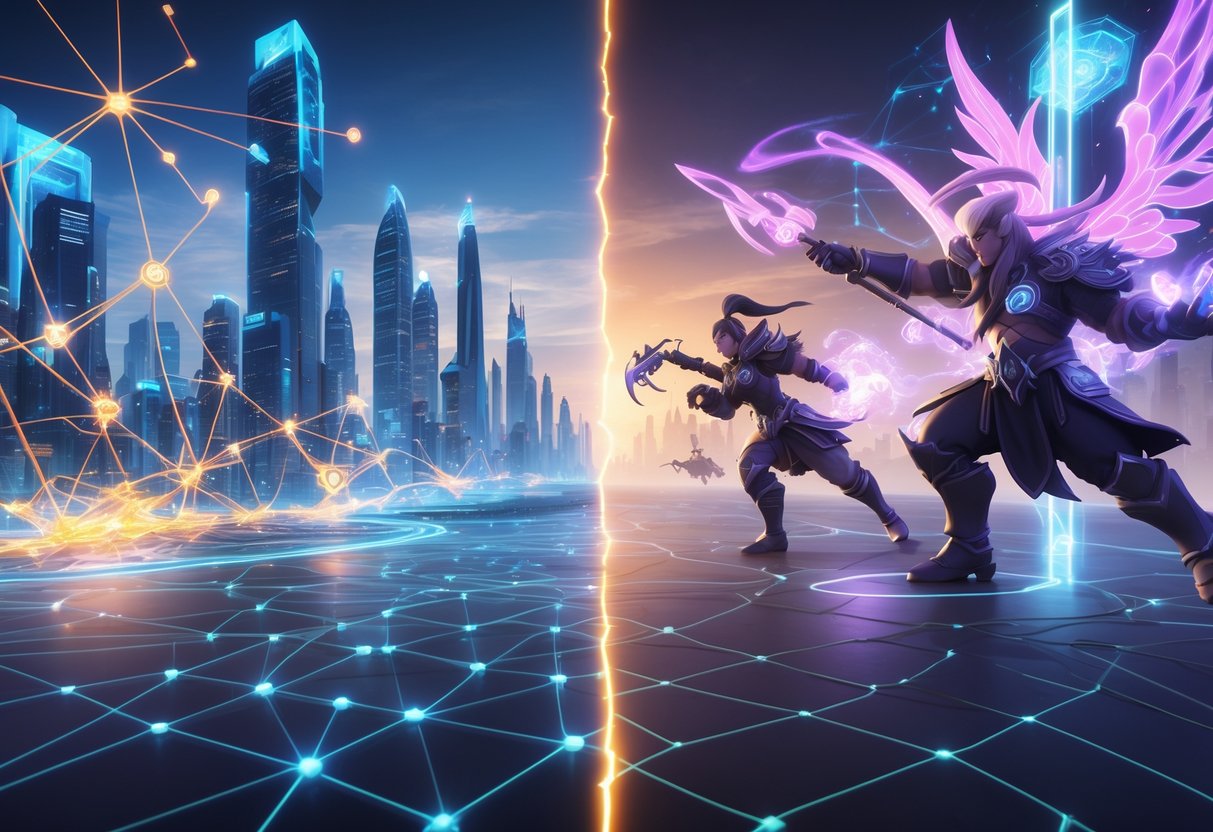
Valve’s handling of Deadlock marks a clear break from Dota 2’s traditional MOBA formula, and honestly, the wider gaming community is still figuring out what it wants from competitive multiplayer games. These shifts might even nudge the whole industry toward new ideas about strategy games and esports accessibility.
Valve’s Influence and Design Philosophy
Valve’s approach with Deadlock feels pretty intentional. They’ve got IceFrog at the helm again, but this time they’re mixing familiar ideas with some bold new stuff.
The numbers make you pause. Deadlock hit a peak of 170,000+ concurrent players in September 2024, but by 2025, the count dropped to around 10,000 according to SteamCharts.
Some big differences in how Valve’s handling things:
- Closed beta testing, unlike Dota 2’s open development
- Mixing third-person shooter elements with classic MOBA mechanics
- Matches move faster than Dota 2’s long, drawn-out games
Some Dota 2 diehards aren’t thrilled, saying Valve’s focus shifted away from their beloved title. It’s a tricky balance—how do you keep old fans happy while trying to catch new ones?
Deadlock’s 1920s noir vibe is a huge shift from Dota 2’s fantasy world. Valve seems determined to give each game its own identity, instead of having them compete head-to-head.
Evolving Genre Expectations
Players today want different things than they did back in 2013 when Dota 2 launched. Deadlock tries to meet these new demands with accessible design choices.
Here’s what people seem to want now:
- Shorter matches (30-45 minutes, not 45-60)
- Smoother, more intuitive movement
- Abilities and mechanics that are easier to read visually
The reaction is pretty mixed. Some veteran Dota 2 players love the strategic depth, but others wonder if Deadlock really scratches that same itch.
Industry folks predict a release window in late 2025 or maybe early 2026. Valve has time to tweak things based on what the beta community says.
Attracting new players without losing the old guard is the real challenge. Deadlock’s 6v6 setup and agile movement try to bridge that gap, blending familiar strategy with a more lively pace.
Early feedback suggests Deadlock is more approachable for newbies than Dota 2. But will players stick around for the long haul? That’s the big question for every competitive game.
Frequently Asked Questions
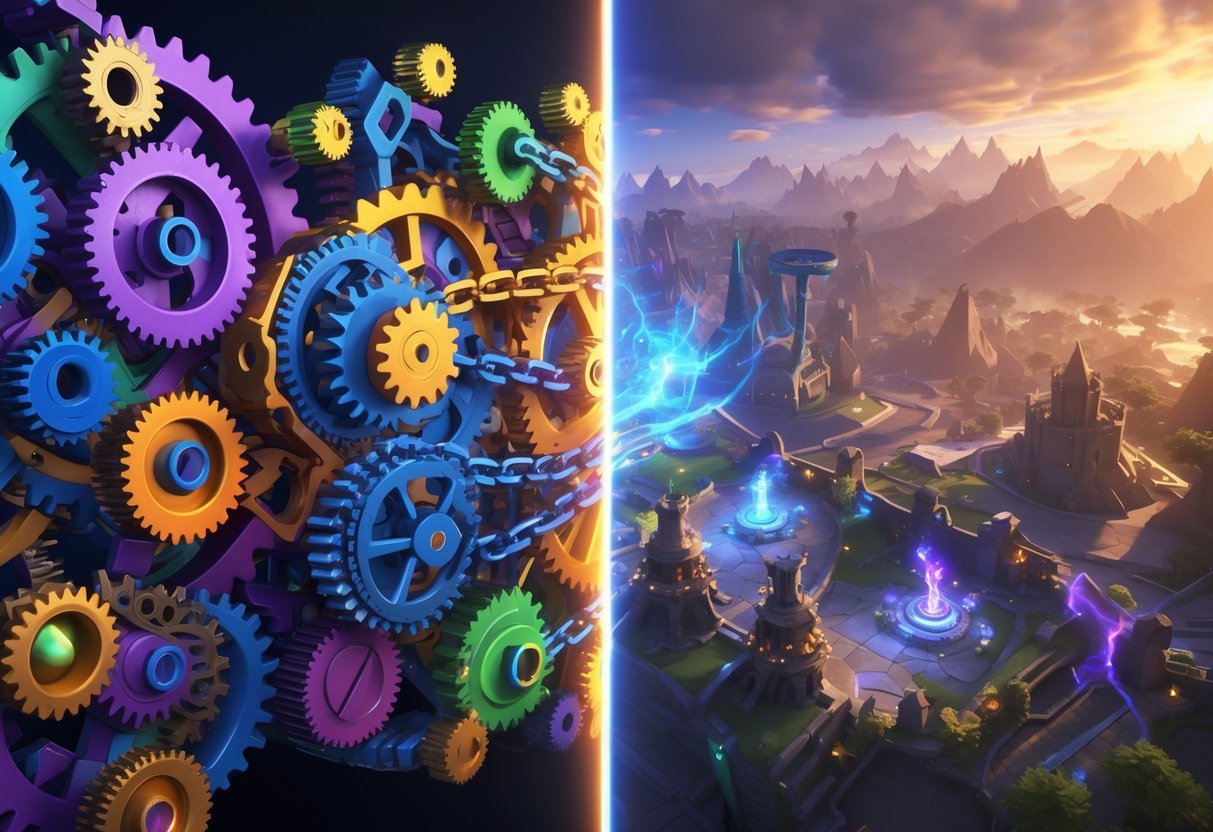
People jumping between these games usually have a lot of questions—about hero abilities, item builds, team fights, and how the ranking systems work. Even the map layouts and pacing make each game feel totally distinct.
What are the key differences between hero abilities in Dota 2 compared to character abilities in Deadlock?
Dota 2 heroes get four abilities: three basics and one ultimate. Players can level up each skill, with ultimates unlocking at levels 6, 12, and 18.
Deadlock characters blend classic MOBA abilities with shooter-style mechanics. Their abilities upgrade through items instead of skill points.
The biggest change? How movement interacts with abilities. In Dota 2, most spells are point-and-click or area effects. In Deadlock, you need to aim and time things, much like a shooter.
How do item interactions in Dota 2 differ from those in Deadlock?
Dota 2’s item system is huge, with over 100 items that offer passive bonuses, actives, or both. Players can combine these into even more powerful items using recipes.
Deadlock keeps it simpler. Fewer items, each one upgrading a specific ability—think weapon damage, vitality, or spirit power.
Shopping works differently too. In Dota 2, you have to return to base or use a courier. Deadlock lets you buy stuff from anywhere on the map through the shop menu.
Can you explain the contrasting strategies involved in team fights in Dota 2 versus Deadlock?
Dota 2 team fights depend a lot on positioning, timing, and resource management. Teams group up for big objectives like Roshan or pushing high ground.
Deadlock’s team fights feel more like a shooter, with lots of vertical movement and cover. Players use zip lines, climb walls, and build cover while fighting.
The pace is different, too. Dota 2 team fights usually build up slowly, then explode. Deadlock keeps the action flowing, mixing shooter chaos with MOBA tactics.
What variations exist between the ranking systems of Dota 2 and the competitive progression in Deadlock?
Dota 2 has a medal-based ranking system with seven main tiers, from Herald up to Immortal. Each tier has stars to show your progress.
Deadlock’s ranking system is still a work in progress during the playtest. Early reports suggest it’ll be similar to other Valve games.
The main thing to watch is how performance is measured. Dota 2 focuses on wins, losses, and some individual stats. Deadlock might factor in shooting accuracy alongside traditional MOBA stuff.
How does the map design in Dota 2 influence gameplay compared to the maps in Deadlock?
Dota 2 uses a symmetric map with three lanes, jungle zones, and key high ground spots. Wards play a huge role in keeping tabs on the map.
Deadlock goes with four lanes and lots of verticality, plus zip lines connecting everything. The map pushes you to move and rotate between lanes more often.
Jungle areas serve different purposes, too. Dota 2’s jungle is mostly for farming and grabbing neutral objectives. In Deadlock, the jungle gives you flanking routes and strategic spots for team fights.
Could you shed light on the differences in pacing and game duration between Dota 2 and Deadlock matches?
Dota 2 matches usually run about 30 to 45 minutes. Sometimes, you’ll see games drag on for over an hour, which can feel pretty intense.
Early on, players focus a lot on farming and picking smaller fights. The bigger team fights don’t really kick in until later.
Deadlock matches, on the other hand, don’t usually last as long. Most people report they average around 25 to 35 minutes, at least in early playtests.
Shooter mechanics in Deadlock seem to keep things moving at a steady pace. There’s not really much downtime.
Power scaling feels different too. In Dota 2, you notice clear early, mid, and late-game phases, and certain heroes really stand out at each stage.
Deadlock doesn’t swing as much; power levels stay more balanced from start to finish. That might appeal to players who like a more even experience throughout the game.









